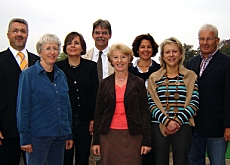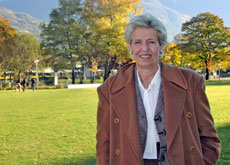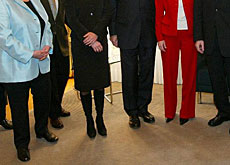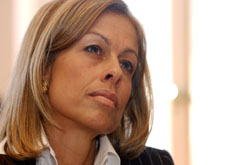Women strengthen their position in local politics

An increasing number of women have entered local politics in Switzerland over the past few years, according to figures published on Sunday.
At the end of last year, they occupied almost 30 per cent of parliamentary seats in Swiss towns and cities.
In the parliaments of Switzerland’s five largest cities, the proportion of women reached 37 per cent, with the city of Bern holding the record with 42.5 per cent, according to statistics of Swiss towns 2007.
In the 1980s the proportion of women in the parliaments of cities was below 20 per cent and even went down to 12 per cent in places with fewer than 10,000 residents.
Since then the proportion has risen by 15 percentage points. But in the big cities, the percentage of women is more than five points higher than in the smallest towns.
In a nutshell, the more people there are living in a town, the more women tend to be represented in the communal parliament. But there are exceptions.
The affluent Bern commune of Muri, which has a population of 12,000, has parity in its parliament and a majority of women in its executive.
In towns with populations of between 10,000 and 100,000, the proportion of women in parliament is 30 per cent.
In the French-speaking part of Switzerland, the communes of Renens (Vaud) with 40 per cent and Monthey (Valais) with 41.6 per cent stand out.
As a comparison, only 26 per cent of members of the Swiss House of Representatives are women.
Local government
The number of women in local government positions in cities has risen from six per cent in 1980 to about a third in 1994, a figure that has stabilised at that level.
In the smallest communes, the percentage of women has increased by five percentage points to 25 per cent, with the notable exception of La Neuveville (Bern) which has a representation of 37 per cent.
A majority of women or at least an equal number with men were in mid-2006 in the communal executives of Carouge (canton Geneva), Bern, Köniz (Bern), Muri (Bern), Herisau (Appenzell Outer Rhodes), Solothurn, Affoltern (Zurich), Locarno (Ticino) Aesch (Basel Country and Rapperswil (St Gallen).
The statistics of Swiss towns 2007 takes into account the 119 communes that had a population of more than 10,000 residents at the last census in 2000, as well as 22 other communes.
swissinfo with agencies
Proportion of women in the Swiss population: 54%
Women in town and city parliaments: 30%
Women in the Swiss House of Representatives: 26%
Women in the Swiss Senate: 23.9%
Women in cantonal parliaments: 24.9%
Women on the boards of companies listed in the Swiss Market Index of blue chip companies: 9%.

In compliance with the JTI standards
More: SWI swissinfo.ch certified by the Journalism Trust Initiative



You can find an overview of ongoing debates with our journalists here . Please join us!
If you want to start a conversation about a topic raised in this article or want to report factual errors, email us at english@swissinfo.ch.